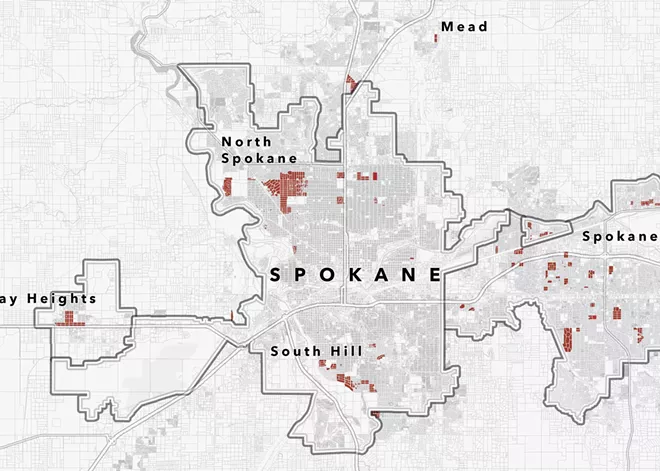Researchers with Eastern Washington University's Racial Covenants Project have released a detailed map of Spokane area properties that have racially restrictive covenants on their deed or title. Over the last three years, the team has located the racist legal documents — locally filed between 1928 and 1955 — which were intended to prevent anyone who wasn't white from living in certain neighborhoods or having their remains interred in certain crypts. The map is live at EWURacialCovenants.org/Map and the team will soon host free workshops to teach impacted homeowners how they can remedy their home's public record. The first workshop runs from 10 am to 11 am on Saturday, Oct. 26, at the South Hill library, 3324 S. Perry St. The next will run from 3 pm to 4 pm on Nov. 9, at the Shadle Park library, 2111 W. Wellesley Ave. Historian Logan Camporeale, who helped start the project, says there will be a notary at the workshops for those who want to fill out an official document declaring the covenant void, which homeowners can then file with the county auditor's office. Attendees should bring their own smartphone or computer. (SAMANTHA WOHLFEIL)
A BRIGHTER FUTURE
In June, the Spokane City Council reallocated $150,000 of federal money from the American Rescue Plan Act to improve residential street lighting. Those efforts may start soon, thanks to a partnership between the Office of Neighborhood Services and Utility Billing that the council approved this week. The offices will start a program to reimburse Spokane residents in high crime areas who install motion sensor floodlights on their homes, or help residents install lights if they are not able to do so themselves. The program will encourage previous victims of crime to participate, as well as focus on brightening alleys and other low-light areas that are more vulnerable to crime. "We are collaborating with the Spokane Police Department to help identify victims of property crime and general high-crime areas as well as planning to work with SPD's volunteer services department [to help install lights]," Pollyanne Birge, the community engagement programs manager of the Office of Neighborhood Services, told council members earlier this month. (ELIZA BILLINGHAM)
POOR EXECUTION
Thomas Eugene Creech, 74, is Idaho's longest-serving death row inmate, with 50 years of incarceration for killing two men in Valley County in 1974. He also beat a fellow inmate to death with a battery-filled sock in 1981. In February, an attempted lethal injection for Creech was unsuccessful. The execution team was unable to establish a peripheral intravenous line despite attempting eight times in veins in his arms and legs. After the Idaho Department of Correction updated its procedures and protocols for executions, it served Creech with a death warrant on Oct. 16, scheduling his execution for Nov. 13. Idaho Maximum Security Institution's F-block, where executions are carried out, was updated to provide an appropriate environment to place a central line via the heart if peripheral IV access can't be established. "Our previous protocols proved effective at protecting the integrity of the process and ensuring adherence with 8th amendment protections against cruel and unusual punishment," IDOC Director Josh Tewalt said in a news release. "These changes enhance the State's ability to carry out an execution by lethal injection by ensuring we have the infrastructure in place to establish IV access." (VICTOR CORRAL MARTINEZ)
























